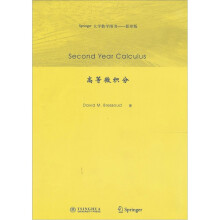Preface
1 F=ma
1.1 Prelude to Newton's Principia
1.2 Equal Area in Equal Time
1.3 The Law of Gravity
1.4 Exercises
1.5 Reprise with Calculus
1.6 Exercises
2 Vector Algebra
2.1 Basic Notions
2.2 The Dot Product
2.3 The Cross Product
2.4 Using Vector Algebra
2.5 Exercises
Celestial Mechanics
3.1 The Calculus of Curves
3.2 Exercises
3.3 Orbital Mechanics
3.4 Exercises
4 Differential Forms
4.1 Some History
4.2 Differential 1-Forms
4.3 Exercises
4.4 Constant Differential 2-Forms
4.5 Exercises
4.6 Constant Differential k-Forms
4.7 Prospects
4.8 Exercises
5 Line Integrals, Multiple Integrals
5.1 The Riemann Integral
5.2 Line Integrals
5.3 Exercises
5.4 Multiple Integrals
5.5 Using Multiple Integrals
5.6 Exercises
6 Linear Transformations
6.1 Basic Notions
6.2 Determinants
6.3 History and Comments
6.4 Exel cises
6.5 Invertibility
6.6 Exercises
7 Differential Calculus
7.1 Limits
7.2 Exercises
7.3 Directional Derivatives
7.4 The Derivative
7.5 Exercises
7.6 The Chain Rule
7.7 Using the Gradient
7.8 Exercises
8 Integration by Pullback
8.1 Change of Variables
8.2 Interlude with Lagrange
8.3 Exercises
8.4 The Surface Integral
8.5 Heat Flow
8.6 Exerecises
9 Techniques of Differential Calculus
9.1 Implicit Differentiation
9.2 Invertibility
9.3 Exercises
9.4 Locating Extrema
9.5 Taylor's Formula in Several Variables
9.6 Exercises
9.7 Lagrange Multipliers
9.8 Exercises
10 The Fundamental Theorem of Calculus
10.1 Overview
10.2 Independence of Path
10.3 Exercises
10.4 The Divergence Theorems
10.5 Exercises
10.6 Stokes' Theorem
10.7 Summary for R3
10.8 Exercises
10.9 Potential Theory
11 E = mc2
11.1 Prelude to Maxwell's Dynamical Theory
11.2 Flow in Space-Time
11.3 Electromagnetic Potential
11.4 Exercises
11.5 Special Relativity
11.6 Exercises
Appendices
A An Opportunity Missed
B Bibliography
C Clues and Solutions
Index

 缺书网
缺书网 扫码进群
扫码进群



